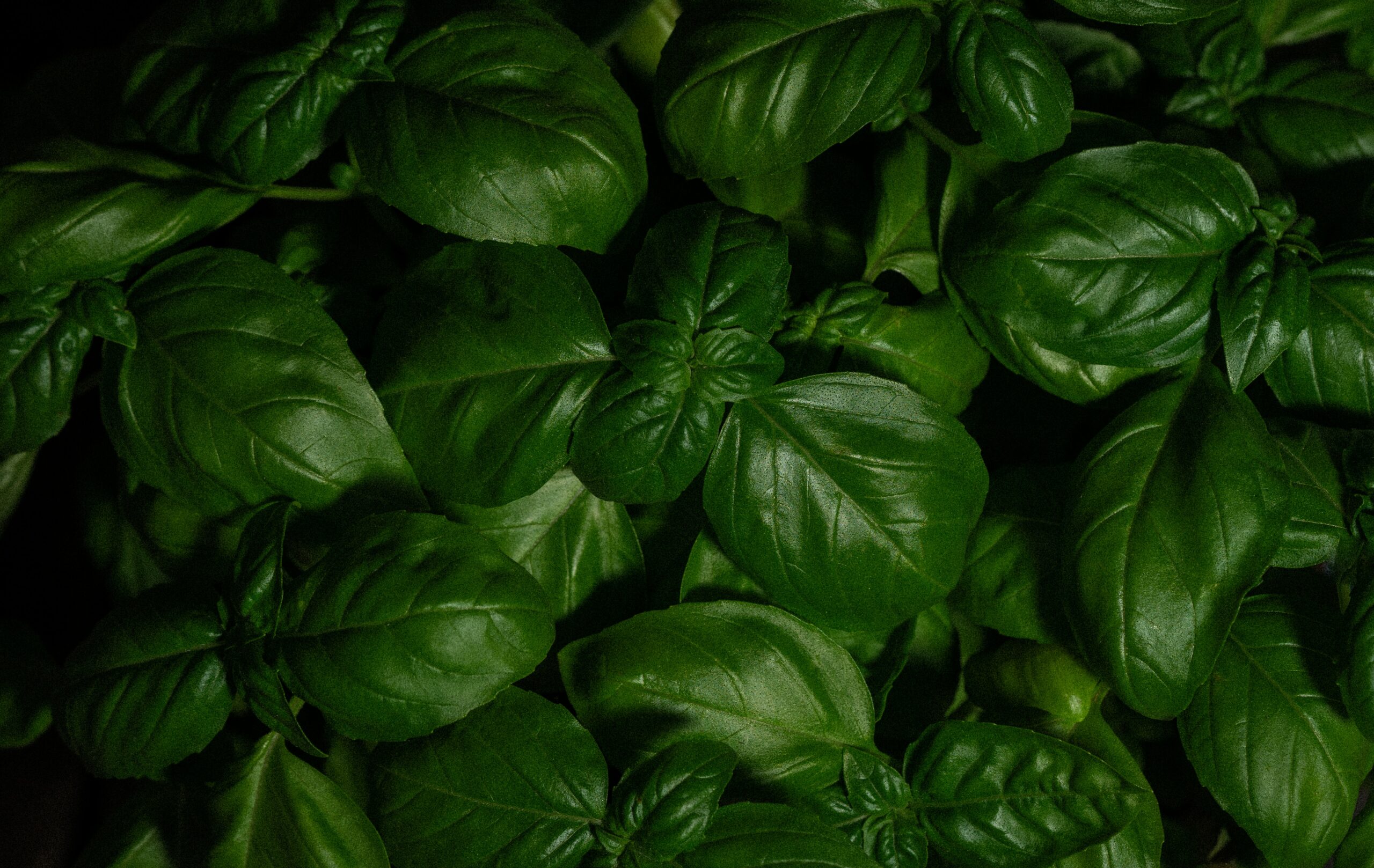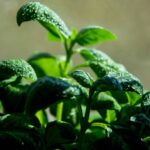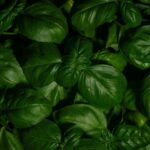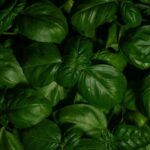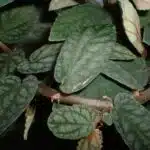Do you want to grow your own fresh basil indoors? It’s not as difficult as it might seem. With a little know-how and the right resources, you can be harvesting your own basil in no time. So let’s get growing!
Growing basil indoors is relatively simple, but it does take some care and attention to get it right. As the idiom goes, “slow and steady wins the race”; this is especially true when it comes to growing herbs indoors. Basil requires consistent moisture and light, so it is important to be aware of the conditions in your home before you start planting.
Fortunately for us, there are plenty of resources available that provide tips on how to grow a thriving indoor basil plant. We will look at everything from soil preparation and proper watering techniques to harvesting and preserving your crop for maximum flavor. With this information in hand, you’ll have all the knowledge you need to successfully grow delicious basil indoors!
Choosing The Right Basil Plant
Interestingly, growing basil indoors is becoming increasingly popular. It’s not hard to understand why; the herb’s fragrant leaves make it a great addition to any home. As a specialist in botany and gardening, I’m here to tell you that you can easily grow basil indoors with just a few simple steps.
The first step is choosing the right basil plant. Basil comes in many varieties – sweet basil, Thai basil, and lemon basil are all popular choices. You want to choose one that will do well in your specific climate. Consider how much sunlight and water your plant will need when selecting your variety of basil.
Next, you’ll need to select the right pot and soil for your plant. Make sure the pot has good drainage so your basil won’t be sitting in water for too long, as this can lead to root rot or fungal diseases. If possible, use a potting mix specifically formulated for herbs like basil; it will provide the best environment for growth. Be sure to provide adequate space around the roots as they expand while growing.
With these two steps taken care of, you’ll be on your way to having an abundant crop of flavorful indoor-grown basil!
Selecting The Right Pot And Soil
Ah, basil – the herb of choice for many cooks and a staple in many dishes. What if we told you that you don’t have to settle for store bought basil when you can grow your own, indoors? Believe it or not, growing basil indoors is possible with the right pot and soil!
So, let’s get started on selecting the best pot and soil for your indoor basil. First and foremost, pick a pot that has adequate drainage holes to allow excess water to escape. Additionally, terracotta pots are ideal since they absorb moisture from the air which keeps the soil from drying out too quickly. Lastly, using a light-weight potting mix specifically designed for herbs or vegetables will help ensure your basil gets off to a great start!
Next up is selecting soil! You’ll want to choose an organic soil mix that contains lots of nutrients such as compost or worm castings. Be sure to avoid any soils containing peat moss as this can be overly acidic which can cause issues with your plants growth. Finally, add some slow release fertilizer into the mix during transplanting – this will give your plants an extra boost while they’re getting settled in their new home.
Now that you understand what type of pot and soil you need for growing Basil indoors, it’s time to set up the perfect environment for your plant!
Setting Up The Growing Environment
Once you have chosen the right pot and soil for growing basil indoors, it’s time to set up the growing environment. To ensure that your basil thrives, here are a few key elements to consider:
• Light: Basil prefers plenty of bright, indirect sunlight. Place your plant in an area with ample light from a south-facing window or near an artificial grow light.
• Temperature: Basil plants prefer warm temperatures between 60°F and 80°F (16°C and 27°C). If possible, keep it away from any areas that experience frequent temperature fluctuations.
• Humidity: Basil is a tropical plant and needs higher humidity than most homes can provide. To maintain its ideal humidity level, mist your plant daily or place a humidifier nearby.
• Airflow: Good air circulation helps prevent fungal diseases like blight or powdery mildew. Make sure that your plant’s leaves don’t touch walls or windows and keep airflow moving around them by using a fan on low speed when necessary.
These four points are essential for setting up the ideal environment for growing healthy basil indoors – with plenty of light, moderate temperatures, extra humidity, and good air circulation. By following these steps now, you’ll be well on your way to successfully planting and caring for your new basil plants!
Planting And Caring For Basil
Planting and caring for basil is like a walk in the park for any gardening enthusiast. If you’ve ever wanted to see your indoor basil thrive, then this is your lucky day. Once you have your growing environment set up and ready to go, it’s time to plant and care for your basil. Here’s how you can do just that.
First things first: get yourself some seedlings from a nursery or garden center. Basil doesn’t grow from seeds indoors, so picking up some ready-to-go plants is the way to go. Plant each seedling in its own pot filled with moistened soil – they should be spaced at least 8 inches apart. Don’t forget to give them plenty of sunlight! Basil needs six hours of direct sun per day, so placing your pots near a bright window is ideal.
Once planted, water your basil regularly but sparingly – make sure the soil isn’t soggy or wet after watering. When new leaves start to form, give them an occasional boost with liquid fertilizer formulated specifically for herbs every few weeks or so. Pruning the stems will also encourage more growth, so pinch off any flowers that appear as soon as you spot them! With proper care and attention, you’ll soon be able to enjoy fragrant sprigs of fresh basil from your own indoor garden all year round.
Now that you know how to plant and care for basil indoors, it’s time to look into its water requirements…
Water Requirements
Are you wondering how to make sure your basil plants get enough water? To ensure that your indoor basil plants thrive, proper watering is essential. As a specialist in botany and gardening, I can tell you that all plants need adequate water levels to remain healthy and grow properly. Let’s take a look at the requirements for watering basil indoors.
When it comes to watering your indoor basil plant, the key is to keep the soil moist but not soggy. Too much water can cause fungal problems or root rot, and too little water will cause wilting or even death of the plant. The best way to check if your basil needs watering is by sticking a finger into the soil; if it feels dry an inch down, then it’s time to water. Generally speaking, most basil plants need about 1 cup of water every 3 days or so.
It’s important to note that during the winter months when plant growth slows down, less frequent watering is necessary. You should reduce the amount of water you give your plant (about 1/2 cup per week) and wait until soil dries out before adding more moisture. With careful attention to when and how much water your indoor basil needs, you’ll have a bright and vibrant herb garden that will last for years!
Now that we’ve discussed optimal watering requirements for indoor basil plants, let’s move on to looking at sunlight needs…
Sunlight Requirements
Ah, sunlight! The one thing that is often taken for granted when it comes to growing basil indoors. While we may think of it as a simple requirement, there is actually quite a bit of nuance involved in getting the amount of sunlight just right. Surprisingly, too much sunlight can be almost as detrimental to basil growth as too little.
As any specialist in botany and gardening will tell you, the ideal amount of sunlight for indoor basil plants is between 6-8 hours per day. Anything less than this can lead to pale, weak leaves that are susceptible to disease and insect infestations. On the other hand, too much direct sunlight can scorch the leaves and stunt their growth. To get this balance just right, make sure you place your basil plants near a south-facing window and rotate them occasionally so they receive equal light exposure on all sides.
When caring for your basil plants indoors, take time to check their positioning from time to time to ensure they’re getting their daily dose of sunshine without being exposed to too much at once. If needed, invest in some sheer curtains or shades to filter out excess light during the hottest parts of the day. Taking such measures will provide your plant with the perfect environment for optimal health and growth – now that’s something worth investing some extra effort into!
Temperature Requirements
When growing basil indoors, many gardeners are concerned about the temperature requirements. While it is true that this herb requires warm temperatures and good air circulation to thrive, with the right conditions, anyone can successfully grow basil indoors.
As a specialist in botany and gardening, I’m here to reassure you that it’s not as difficult as it seems. Basil prefers a temperature of 70°F (21°C) during the day and no lower than 55°F (13°C) at night. This can be achieved by keeping your plants near a sunny window or using a grow light setup if necessary. Additionally, keep in mind that good air circulation will help ensure your basil plants stay healthy and vigorous.
One way to ensure your basil has enough warmth and airflow is to place it on a windowsill or desk fan. This will keep the air circulating around the plant while also providing extra heat when needed. With just a few simple steps, you’ll have happy and healthy basil plants all year long!
Pruning And Trimming
One interesting fact about pruning and trimming basil is that it can increase the yield of the plant by up to threefold. Pruning and trimming are essential steps for growing a healthy basil indoors, as it helps promote air circulation, encourages new growth, and keeps plants looking their best.
When it comes to pruning or trimming, most experts suggest cutting back stems all the way to just above a set of leaves on the stem. This will encourage bushier growth and help with pest control since pests are more likely to congregate on older parts of the plant. It’s also important to pinch off flower buds before they open so that your basil won’t go to seed prematurely.
To take care of your basil plants, you should inspect them regularly for any signs of disease or pests. If you find any, act quickly as these can spread quickly and cause significant damage if not addressed promptly. Also look out for any yellowing leaves or wilting stems – these are indications that your plants need more water or fertilizer, respectively.
Regular pruning and trimming can help keep your basil in top shape while helping you get a bigger harvest. By following these simple steps and inspecting your plants regularly you can be sure that you’ll have plenty of fragrant, fresh basil indoors all year round!
Fertilizing Basil
Fertilizing is an important step in growing basil indoors. To ensure the plant gets the nutrients it needs to thrive, it’s essential to fertilize regularly. With that said, it’s equally important not to over-fertilize as this can lead to nutrient burn and other issues.
As with any type of fertilizer, a slow-release fertilizer is best for basil plants. This type of fertilizer slowly releases nutrients into the soil over time, ensuring a steady supply of them for your basil plant’s needs. Depending on your soil type, you may also need to add trace element supplements or organic matter between feedings.
Finally, when it comes to frequency of fertilizer applications, once every two weeks should suffice during the peak growing season (spring and summer). When temperatures start dropping in the fall and winter months, reduce this frequency accordingly. This will ensure your basil plants don’t become overwhelmed with too many nutrients at once. With proper care and attention, your indoor basil plants will remain healthy and productive throughout the seasons!
Controlling Pests And Disease
When growing basil indoors, it is important to be aware of the potential for pests and disease. Pest infestation can cause damage to the foliage, while disease can spread and cause further harm. As such, it is essential that gardeners take steps to monitor and control pests and potential diseases.
The first step in controlling pest and disease is prevention. Regularly inspect basil plants for signs of infestation or disease. Prune off any affected areas immediately before it spreads. Additionally, avoid over-watering as this can encourage fungal growth.
The second step is to use non-toxic methods of pest control if needed. Homemade remedies such as neem oil spray are a popular choice for controlling aphids and other insects on basil plants. Be sure to follow the instructions carefully when using these products indoors. By taking these precautions, gardeners will keep their basil healthy and thriving in an indoor environment with minimal effort.
With proper pest and disease management, harvesting basil becomes much easier! Keeping an eye on infestations early-on will help prevent any further damage later on down the road, resulting in a bountiful harvest of fresh basil leaves!
Harvesting Basil
Harvesting basil is an exciting time for gardeners, as they get to enjoy the fruits of their labor. It is the culmination of months of careful attention and nurturing. As such, it should be approached in a mindful manner, with respect and gratitude for the plant. For best results, harvesting basil should occur when the leaves are at their peak of flavor and aroma, which is usually when they have reached a mature size but have not yet started to flower.
The most common way to harvest basil is by pinching off the top sets of leaves with your fingers or scissors. This will encourage the plant to branch out, making it bushier and more productive. When harvesting larger quantities for culinary use or for preserving, cut stems about two inches below a set of leaves using sharp scissors or pruners. This technique will help keep the plant bushy and avoid thinning out too much foliage from any one stem.
Basil can be harvested until it begins to flower or bolt – whichever comes first – at which point its flavor will diminish significantly. If you plan on preserving some fresh basil leaves, it’s best to pick them before they start flowering so you can enjoy their full flavor later on. After harvesting, take care that your herbs don’t wilt by placing them in a cool area indoors or wrapping them in damp paper towels prior to storage.
Preserving Fresh Basil
Preserving freshly harvested basil is an essential step for those who wish to enjoy it all year round. In this section, we’ll discuss the many methods available for preserving basil so that its flavor and aroma remain intact.
To begin with, freezing is a great way to preserve basil. Simply place the leaves into a food processor or blender and puree them with a small amount of water. Then, spoon the puree into ice cube trays or other suitable containers and freeze until completely solidified. This method will keep fresh basil viable for up to three months.
For longer-term preservation, consider drying the herbs in the oven or using a dehydrator. To do this, preheat your oven to its lowest setting (usually around 120 degrees) and spread the leaves out on a baking sheet lined with parchment paper. Bake for 2-3 hours until fully dry and crisp, then store in an airtight container away from heat and light. Alternatively, use your dehydrator at 95 degrees for two hours before storing in an airtight container as well.
Preserving freshly harvested basil properly can help you enjoy its delicate flavors throughout the year. With these simple steps, you’ll be able to savor the taste of summertime all year round!
Propagating Basil
Propagating basil is a truly rewarding experience from the botanist and gardener’s perspective! The process of propagating basil plants is quite simple, yet yields astonishingly powerful results. It’s a must-do for anyone looking to create an abundance of fresh herbs, as well as those who want to expand their home garden.
First, the gardener must choose which type of propagation technique to use: stem cuttings or root division. Stem cuttings involve cutting off a length of stem with at least two sets of leaves and planting it in moist soil – this is the simplest method and requires minimal equipment. Root division involves carefully digging up a mature plant and dividing the roots into multiple sections before replanting each section in its own pot; while more involved than stem cuttings, root division can yield many healthy plants from one original!
After selecting the right technique, it’s time to get propagating! Planting the stems or root divisions in moist soil, ensuring that plenty of sunlight is available for growth (but not too much!), and providing regular water are all vital steps in successfully growing new basil plants from existing ones. Additionally, adding mulch around the pots helps keep soil temperature consistent and provides extra nutrients for optimal plant health. With these simple practices combined, propagating basil can be quick and easy – you’ll have delicious herbs in no time!
Troubleshooting Common Issues
Growing basil indoors can be a rewarding experience, but it is not without its difficulties. Troubleshooting common issues is an essential part of the process. To make sure that you get the most out of your basil plant, let’s explore some of the potential problems and how to address them.
First off, you may find that your basil plant is not growing as vigorously as you had hoped. This could be due to a lack of nutrients in the soil or too little light or water. To remedy this, make sure to fertilize regularly and provide ample sunlight and moisture. Also consider adding some soil amendments such as perlite or vermiculite to improve drainage and aeration in the potting mix.
The second issue you may encounter is pests like aphids or spider mites. These insects can quickly sap away nutrients from the leaves and stems of your basil plant, leaving it weak and prone to disease. To prevent these pests from taking over your plant, keep an eye out for signs of infestation such as distorted leaves and webs between stems. If you do detect any pest activity, treat the plant with an insecticidal soap or natural oil spray as soon as possible to control the infestation before it spreads further.
Finally, your indoor basil plants could suffer from fungal diseases like powdery mildew if left unchecked. To help prevent this, make sure that there is enough air circulation around your plants by avoiding overcrowding them in small pots or containers. Additionally, reduce humidity levels by using a fan or dehumidifier if necessary and water only at the base of plants instead of overhead sprinkling which can encourage fungal growth on their leaves.
With just a few simple steps, you can ensure that your indoor basil plants thrive despite common issues that may arise during their growth cycle!
Tips For Successful Indoor Growing
As we move on to the 15th step of successful indoor growing, there are a few tips that can help increase your chances of success. First, it is important to make sure that you provide enough light for basil. Basil needs at least 6 hours of sun per day, so using grow lights or placing the plant near a south-facing window can be helpful. Additionally, ensure that the soil is well-draining and fertilize regularly with a balanced fertilizer.
Next, when watering your basil plant, make sure you do so consistently and avoid overwatering. Basil needs to remain moist but not soggy. If you don’t want to water manually, consider using a self-watering container or automatic irrigation system such as a soaker hose or drip irrigation system.
Finally, it’s important to pay attention to temperature when growing basil indoors. Ideally, temperatures should be between 65-85°F during the day and slightly cooler at night. Too much heat can cause wilting and poor growth, so if necessary use fans or air conditioning to maintain comfortable temperatures for your plants. With these tips in mind, you should have no problem growing healthy basil indoors!
Frequently Asked Questions
How Often Should I Fertilize My Basil Plant?
Growing basil indoors can be a rewarding experience, as its fragrant leaves bring flavor and freshness to the home. However, proper care is essential for a healthy harvest. Fertilizing your basil plant is one of the most important steps in cultivating a flourishing garden.
The frequency of fertilization will depend on how much light your basil receives, among other factors. Generally speaking, indoor plants should be fertilized every two weeks during their growing season with an organic fertilizer that has a balanced NPK ratio of 3-1-2 or 4-2-3. If you have access to natural compost, this can also be used to supplement the soil’s fertility instead of using chemical fertilizers.
It is important to note that over-fertilization can cause more harm than good, as too much nitrogen can lead to stunted growth and discoloration of the foliage. Monitor the health of your plant closely and adjust accordingly if you notice any signs of nutrient deficiency or toxicity.
To ensure optimal growth: •tFertilize twice per month during active growth periods •tTest soil composition before use •tMonitor plants closely for signs of nutrient deficiency/toxicity
When it comes to indoor gardening success, providing adequate nutrients is paramount – as it gives your basil plant the energy it needs to thrive in its confined environment. With some basic knowledge and attention to detail, you will be able to produce an abundance of flavorful herbs even without access to outdoor space!
How Do I Know When It’s Time To Harvest My Basil?
Growing basil indoors is like taking a masterclass in botany. It requires a bit of skill and finesse to make sure your plants get the right amount of light, water, and nutrients. When you’ve figured out the basics, it’s time to harvest your basil.
Harvesting your basil is an art form in itself. You’ll know it’s time to harvest when the leaves are mature, bright green, and have a slightly pungent smell. When harvesting, use scissors or pruning shears to cut off individual leaves or entire sprigs from the top of the plant, leaving at least two sets of leaves on each stem so that the plant can regrow.
To maximize your yield, you’ll want to monitor the progress of your basil closely by checking for new growth regularly and harvesting when necessary. With a bit of patience and care, you can enjoy delicious home-grown basil all year round!
What Is The Best Way To Store Fresh Basil?
Storing fresh basil is an essential part of keeping your harvest at its peak flavor and vibrancy. As a specialist in botany and gardening, there are three key steps for proper storage of this aromatic herb.
Firstly, it’s important to understand that basil is a highly perishable herb and needs to be stored correctly to preserve its flavor and texture. The best way to store fresh basil is by wrapping the leaves in a slightly damp paper towel or cloth and placing them in an airtight container in the fridge. This will keep the basil from drying out too quickly, allowing you to enjoy it for up to two weeks.
Secondly, if you want longer lasting storage for your basil, try freezing it. To freeze basil, simply chop it into small pieces and place it in an airtight container or freezer bag before putting it into the freezer. This method will keep your basil fresh for up to six months!
Finally, you can also dry your basil by hanging individual leaves upside down in a warm, dry place away from direct sunlight until they are completely dry. Once the leaves are dried out you can store them in an airtight container or jar and they’ll keep their flavor for up to one year!
Using these three methods of storing fresh basil will ensure that you get the most out of your harvest while ensuring that you don’t waste any of this flavorful herb!
How Can I Tell If My Basil Is Being Affected By Pests Or Disease?
As a specialist in botany and gardening, one of the most common questions I hear is how to tell if basil is being affected by pests or disease. It’s important to be aware of these problems because they can quickly harm your plant if not addressed properly.
The first step in determining whether your basil is affected by pests or disease is to inspect the leaves carefully. Look for any discolouration, holes, or wilting. If you notice any of these signs, it could indicate that your plant has been infested with insects such as aphids or whiteflies. Additionally, signs of fungal diseases such as powdery mildew and downy mildew may also be present on the leaves.
If you suspect that your basil has become infected with either pests or a disease, there are steps you can take to help restore its health. For insect infestations, you can try using natural predators like ladybugs and lacewings to eliminate them from the area. If a fungal infection is present, remove any infected leaves immediately and make sure the soil pH level is neutral. You can also use fungicides to treat the affected area and prevent further spread of the fungus.
It’s important to act quickly when it comes to addressing pest and disease issues with basil plants so they don’t become more severe. Regularly inspecting your plants will help you detect any problems early on so they can be taken care of before it’s too late!
What Is The Optimal Temperature For Growing Basil Indoors?
When growing basil indoors, one of the most important factors is temperature. Basil requires temperatures between 65°F and 75°F (18°C to 24°C) for optimal growth and development. Too hot, and the plant will wilt; too cold, and it will stop growing.
To ensure your basil plants stay healthy and happy, there are a few things you can do: • Monitor the Temperature: Use a thermometer or hygrometer to keep an eye on the temperature in your room or greenhouse. If needed, use fans or heating pads to adjust the temperature accordingly. • Keep Regular Watering Schedules: Basil needs moist soil but not soggy soil in order to thrive. Check your plants daily for any signs of wilting or drooping leaves that could indicate over-watering. • Provide Plenty of Sunlight: Basil plants need at least six hours of sunlight each day to stay healthy. If natural sunlight isn’t available, you can supplement with grow lights – either fluorescent bulbs or LED lights placed close to the plants.
Finally, be sure to check your basil regularly for any signs of pests or disease such as yellowed leaves, discoloration on the stems, or a white powdery substance on the leaves – all indicators that something may be wrong with your plant’s health. With regular monitoring and maintenance you should have no problem keeping your basil plants thriving indoors!
Conclusion
Growing basil indoors can be a rewarding experience. With a bit of knowledge and the right conditions, you can have fresh, aromatic basil all year round. With proper care and maintenance, your basil plant will thrive for many years to come.
For example, one of my friends grew an indoor basil plant that produced huge harvests every year. He used the right soil, temperature and lighting to ensure optimal growth and health of his plants. He also fertilized regularly and harvested when necessary. His garden was abundant with luscious green leaves that added flavor to his cooking.
In conclusion, growing basil indoors requires a bit of effort but is certainly worth it in the end. By understanding the basics of caring for your plant and using helpful tips such as keeping a consistent temperature range and providing adequate light, you are sure to have success with your indoor herb garden. With patience and dedication, you will soon be enjoying the fruits of your labor!

